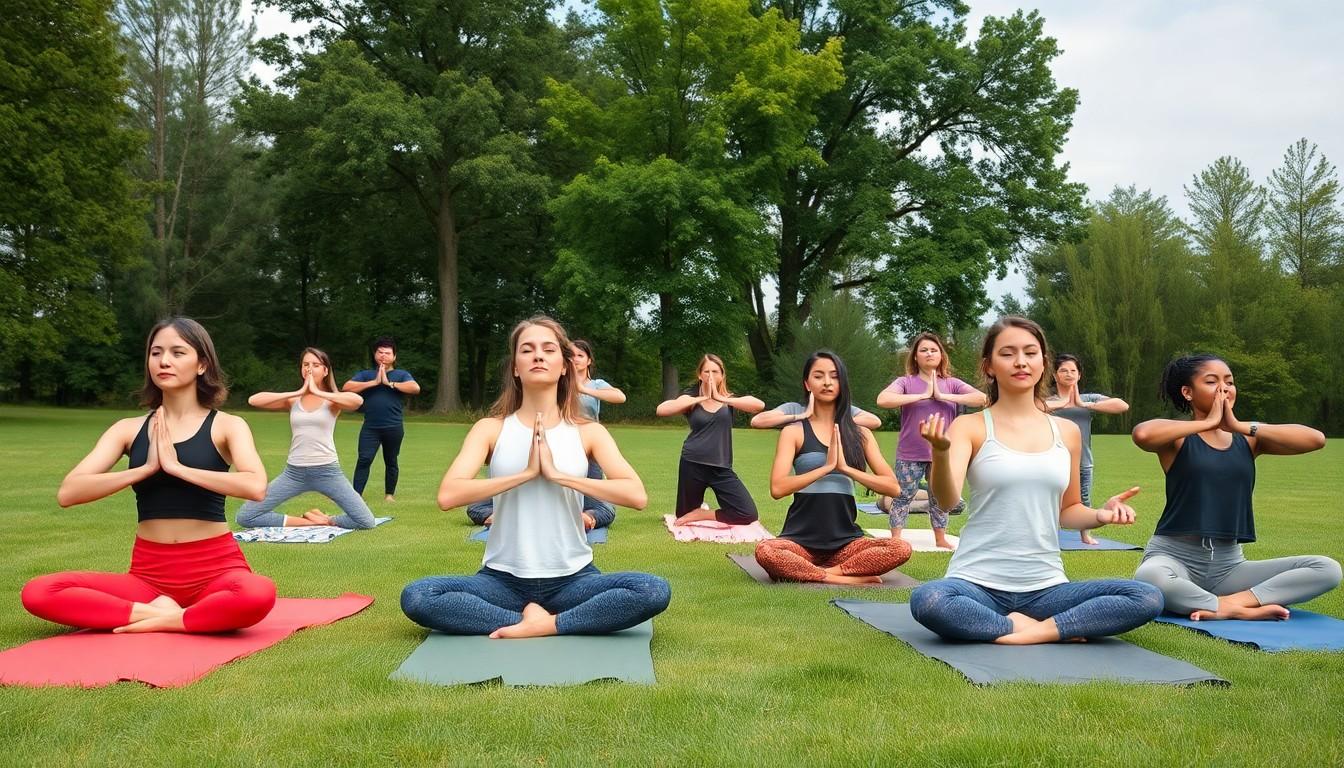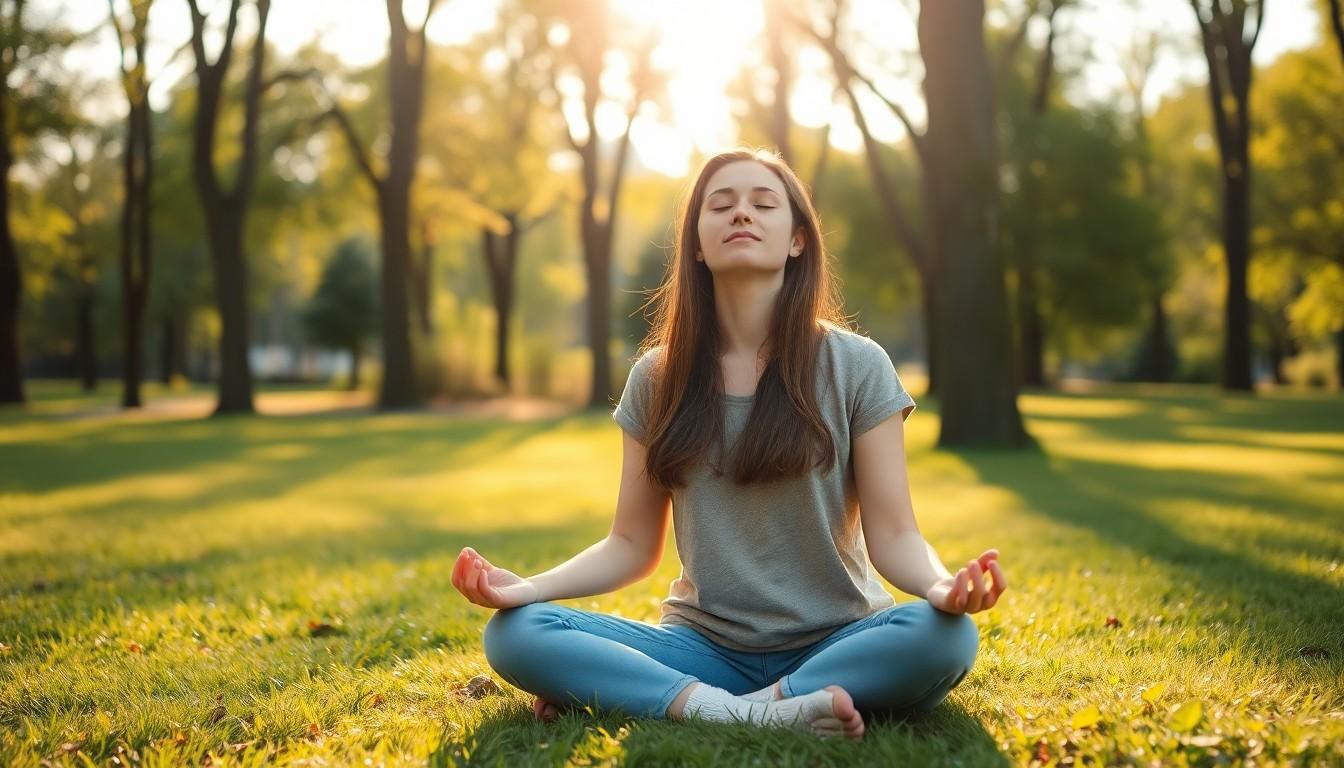In a world buzzing with distractions and endless to-do lists, finding your zen can feel like searching for a needle in a haystack. Enter mindfulness techniques—your secret weapon against the chaos. These simple yet powerful practices can help anyone tune into the present moment, reduce stress, and boost overall well-being. And guess what? You don’t need a PhD in meditation to get started.
Imagine having a handy PDF filled with mindfulness techniques right at your fingertips. It’s like having a personal trainer for your mind, minus the sweat and the spandex. Whether you’re a seasoned pro or just dipping your toes into the mindfulness pool, this guide is designed to make your journey enjoyable and effective. So grab a cup of tea, take a deep breath, and let’s explore how these techniques can transform your daily routine into a peaceful oasis.
Overview of Mindfulness Techniques
Mindfulness techniques focus on enhancing awareness of the present moment. Various practices foster a sense of calm and help reduce stress levels. Breathing exercises serve as one fundamental approach, promoting relaxation through controlled breathing. This method often includes deep inhalations followed by slow exhalations.
Body scan meditation allows individuals to increase physical awareness. By directing attention to different body parts, practitioners can identify tension and consciously release it. Visualization techniques also play a role, as individuals create mental images that evoke peace or joy.
Gratitude practices cultivate a positive mindset. Writing down three things one appreciates each day encourages a focus on the positives in life. Engaging in mindful walking offers another option, where individuals synchronize their steps with their breath, grounding them in the here and now.
Other techniques include mindful eating, which emphasizes savoring each bite, enhancing appreciation for food. Journaling allows for reflection, enabling individuals to recognize thoughts and feelings without judgment. These techniques are straightforward and can seamlessly fit into daily routines.
Incorporating mindfulness into life often leads to increased resilience against stressors. Regular practice not only enhances emotional regulation but also boosts overall well-being. For detailed guidance, accessing a PDF that outlines various mindfulness techniques can provide valuable insights and structured approaches to integrating these practices effectively.
Benefits of Mindfulness Techniques

Mindfulness techniques offer numerous advantages that enhance overall well-being. Practicing these techniques fosters mental clarity and emotional balance.
Mental Health Improvements
Regular mindfulness practice leads to notable mental health improvements. Participants often experience reduced symptoms of anxiety and depression. Enhanced emotional regulation allows individuals to respond to stressors thoughtfully, rather than react impulsively. Increased awareness cultivates a stronger connection between thoughts and feelings, promoting healthier coping mechanisms. Studies indicate that mindfulness can lower cortisol levels, a stress hormone, resulting in improved psychological resilience. These factors combined contribute to a greater sense of peace and stability in daily life.
Physical Health Benefits
Incorporating mindfulness techniques into a daily routine provides significant physical health benefits. Participants frequently report lower blood pressure and improved cardiovascular health. Engaging in mindful eating encourages awareness of hunger cues and portion sizes, promoting healthier dietary choices. Additionally, mind-body practices such as yoga and meditation improve flexibility and overall physical fitness. Research highlights mindfulness’s positive impact on sleep quality, allowing for deeper rest and recovery. Regular practice fosters a holistic approach to health, addressing both mental and physical well-being.
Popular Mindfulness Techniques Available in PDF
Numerous mindfulness techniques can enhance well-being and reduce stress. These techniques can be discovered in accessible PDF guides, making them easy to implement.
Breathing Exercises
Breathing exercises help individuals center their thoughts and calm their minds. Practicing deep breathing encourages relaxation by focusing attention on inhaling and exhaling. Techniques such as 4-7-8 breathing create a rhythm that promotes tranquility. Engaging in these exercises for just a few minutes daily fosters greater awareness and helps manage anxiety. Breathing exercises serve as a foundational practice for mindfulness, contributing to improved emotional regulation.
Meditation Practices
Meditation practices provide a structured approach to mindfulness. These methods can range from guided meditations to silent practices, allowing flexibility for various preferences. Five to ten minutes of daily meditation leads to significant mental clarity and reduced stress levels. Apps and online resources often offer downloadable PDFs containing meditation scripts, making it easier to start. Incorporating meditation into routines cultivates a deeper sense of presence and enhances overall mental health.
Body Scan Techniques
Body scan techniques promote awareness of physical sensations throughout the body. This practice typically involves mentally scanning from head to toe, identifying areas of tension or discomfort. Spending ten minutes on this method encourages relaxation and fosters a connection between mind and body. Detailed PDFs often guide practitioners through this process, enhancing effectiveness. Body scan techniques can not only alleviate stress but also improve physical awareness and promote holistic well-being.
How to Use Mindfulness Techniques PDFs Effectively
Mindfulness techniques PDFs provide valuable resources for improving mental health and well-being. Implementing these strategies effectively enhances their benefits.
Setting Goals
Establishing clear goals before starting mindfulness practices shapes the experience. Focus on achievable objectives, such as practicing for five to ten minutes daily. Setting specific targets helps in tracking progress. It encourages consistent engagement with the techniques. Identify goals that resonate personally, whether it’s reducing stress or enhancing awareness. Adjust these targets periodically based on changing needs. Utilize the PDF guide to log achievements. Documenting milestones fosters motivation and accountability.
Creating a Routine
Integrating mindfulness into daily life requires establishing a structured routine. Designate specific times for practice, like early morning or before bed. Consistency reinforces habits and makes mindfulness a natural part of the day. Incorporate techniques from the PDF seamlessly into existing activities, such as mindful eating during meals. Create reminders to stay on track, such as setting alarms or writing notes. Flexibility remains essential; adjust the routine as circumstances change to maintain engagement. Emphasizing routine enhances the likelihood of long-term benefits from mindfulness practices.
Conclusion
Embracing mindfulness techniques can transform daily life by fostering a sense of calm and clarity. With the availability of helpful PDF guides individuals can easily access and implement these practices. By setting achievable goals and establishing a routine mindfulness becomes a natural part of life.
The benefits extend beyond mental health to physical well-being. Regular practice not only enhances emotional regulation but also contributes to overall resilience. As individuals incorporate mindfulness into their lives they’ll likely discover a profound sense of peace and improved quality of life.

